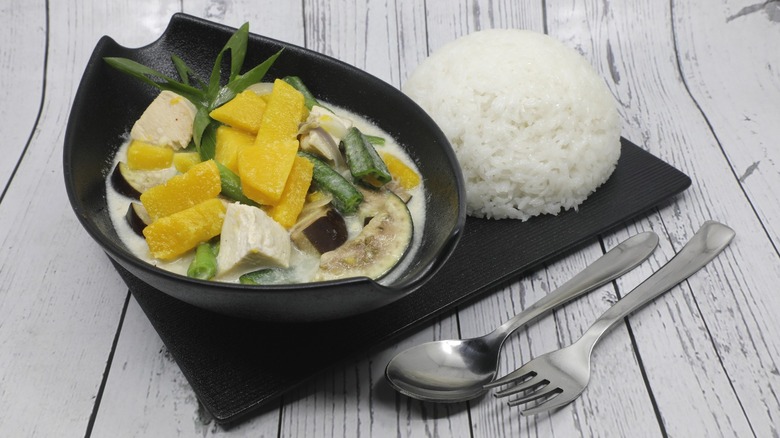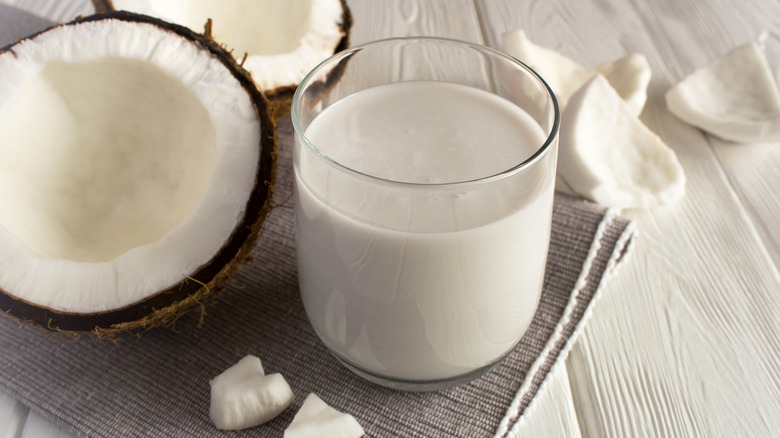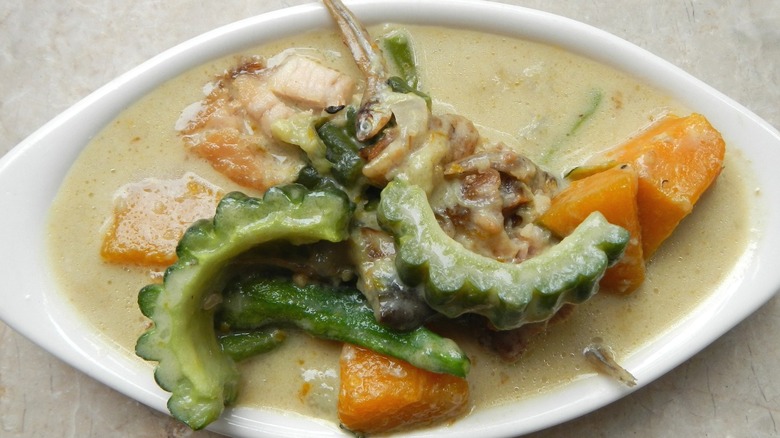Ginataang Gulay: The Filipino Stew That Makes Coconut Milk The Star
Few dishes deliver the comforting nourishment of a stew. While many renditions in the U.S. are associated with a meat-based broth, a variety of liquids are used worldwide. In Korea, a hugely popular kimchi tofu stew comes together atop a savory kelp and dried anchovy base. For a creamier take, a Japanese chicken and vegetable dish known as white stew is crafted with béchamel. But what if you're looking for something right in the middle, with an aromatic base paired with a creamy texture? Turn to Filipino ginataang gulang.
Made with a deliciously dense coconut milk base, the dish is loaded with balanced yet tasty flavors. The coconut lends a mild sweetness, while vegetables like squash add nutty undertones. Seafood additions throw in a salty essence, and some also add pork for an extra-satiating, savory note. None of the flavors override one another, with a medley of textures keeping the sensations interesting.
What's in ginataang gulay?
This fragrant stew centers on coconut milk, which serves as a key flavoring and liquid vessel for the components. In fact, the term ginataang encompasses an umbrella of dishes that poach foods in coconut milk. First brought to fame throughout the Philippines by the Bicolano ethnic group, such a cooking method can be applied to everything from tuna, meats, vegetables, and even desserts. Ginataang gulay mixes in a little bit of everything, often combining denser vegetables like squash, with pork and seafood.
Since coconut farming is one of the Philippines' most dominant industries, it's no surprise that the fruit has such a ubiquity in the cuisine, too. Known as gata, its liquified state is typically delineated into two categories: freshly pressed coconut milk and coconut cream. Ginataang gulay usually reaches for the latter, which is canned and lends a richer, more stew-like texture as opposed to watery coconut milk.
How to make ginataang gulay
In addition to its indispensable coconut milk base, ginataang gulay incorporates a range of flavorful ingredients, including aromatics like garlic and onion, to build flavor. For added complexity, shrimp paste is sometimes used, as well as chili pepper for a kick of spice.
Incorporated proteins differ, but thinly sliced pork and shrimp are a common combination. To amplify its seafood nature, some renditions also add crab. Then come the vegetables, which are the most varied of the ginataang gulay additions. Squash is a beloved component, adding sturdiness and meshing nicely with the coconut milk. Other ingredients can include eggplant, okra, bitter melon, sweet potato, green beans, and Malunggay leaves, a nutritious green common in Filipino cooking. Ginataang gulay frequently incorporates such a kaleidoscope of components, and their textures interact in the coconut milk for a delectable result. And best of all, the seafood and meat additions can be left out completely, forming a vegan dish loaded with colorful produce simmered to perfection.


